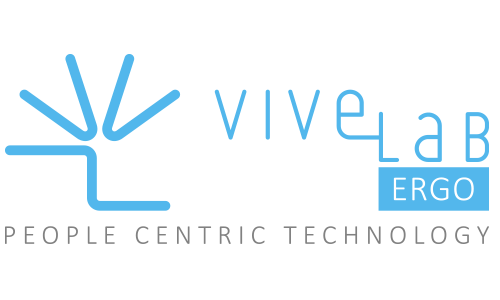EXHIBITORS INITIATIVES
Ergonomics and Productivity: an indissoluble marriage
Work better, faster, healthier!
The digital ergonomics solution is already on the market!
The Xsens motion capture system and ViveLab Ergo software highlight the unnecessary, time-consuming movements, and the health-damaging effects of forced movements caused by incorrect workplace design. With this software-as-a-service solution is easy to create an optimal environment and workflow at existing workplaces or in the design phase without building a physical prototype.
The full presentations are not available for this workshop.
Please contact info@caeconference.com if interested in these topics

Nicola Gramegna, CTO Manufacturing Competence Center, EnginSoft
Welcome
Alessandro Bonfiglio, Product Specialist, Human Motion Measurement, Xsens
Xsens MVN Analyze: Ergonomics in the factory
Xsens MVN Analyze is a 17-tracker full-body motion analysis system. Based on our in-house developed biomechanical model, MVN Analyze provides 3D joint kinematics, body Center of Mass, as well as, spatial parameters such as segment position and orientation. When doing ergonomic measurements using inertial measurement unit (IMU) technology, one of the first setbacks you would typically encounter are metallic objects, which have their own magnetic field and, thereby, create distortions. This phenomenon has always been The Achilles heel of IMU-based Motion Capture. Typically, metallic objects and/or electrical engines in the vicinity could cause magnetometer drift over time, leading to unusable data or the need for additional and costly post-processing. After 10 years of research and development, Xsens has come up with a new MVN engine, which includes full magnetic immunity and advanced soft tissue modelling. Such an innovative framework can be considered a giant next step in IMU-based 3D motion capture, and allows Xsens to ensure consistent and reliable data in any environment, including near the production line or inside a car.
Páykar Yáhya, Mechanical Engineer, Ergonomist, ViveLab Ergo
Work better, faster, healthier! Virtual ergonomic software and services in the cloud
ViveLab Ergo is a cloud-based, 3D ergonomic software for modeling, analyzing human beings, machines and robots moving in a 3D space. The software highlights the unnecessary, time-consuming movements, and the health-damaging effects of forced movements caused by incorrect workplace design. The software evaluates the postures of the employees according to seven built-in ergonomic analyses tools: RULA, OWAS, NASA-OBI methods, ISO 11226, EN 1005-4 standards, Spaghetti Diagram and Reachability Test. The software checks whether the load on each body part exceeds the acceptable limit. Thanks to the accurate capturing of motion the built-in analyses methods also detect those critical movements and postures that might not have been noticed without a Motion Capture sensors or that might have remained hidden because of potential screening effects. With this software-as-a-service solution is easy to create an optimal environment and workflow at existing workplaces or in the design phase without building a physical prototype. We support to design and redesign workplaces where people from multiple age groups, nationality, and changed working ability could be employed effectively without the fear of accident or MSD.
Katalin Urbán, EHS Manager, Grundfos Manufacturing
Digital tools in ergonomic assessment at Grundfos Manufacturing
Case study: Production process optimization in order to increase efficiency and to reduce the workload Pump manufacturing including motor production involves manual assembly and manual handling. Screening and sensory assessment was used to map, prioritize and assess in detail the workstations of selected production lines and improve working circumstances and satisfaction of employees. We measured the motion of employee with the help of Xsens sensors and analyzed them in ViveLab Ergo software to identify the movement deficits and specify the needed actions. After that, the experts proposed changes and designed the optimized work environment including analyzes of the planned work processes. A dedicated team selected the changes that would be implemented aided by the fact that we were able to compare the new workflow with the original one. After implementation we expect that the cycle time would be shorter and that the workload would be reduced. Preventing musculoskeletal disorders means an ideal for the employees and also financial savings, as the cost of sick leave days is expected to be significantly reduced.
Michael Wichtl, AUVA Allgemeine Unfallversicherungsanstalt
Ergonomics to promote wellbeing, safety and productivity on workplaces in production lines
Workplace design should aim at improving system availability, reliability, occupational hazards and risks with the consequence also to improve operational safety and wellbeing of the employees.
Taking a comprehensive approach requires addressing different stakeholders (eg. designers and planers of workplaces at production lines, managers, workers, occupational safety and health experts) and considering risk assessments less as a legal obligation but as a tool to make human interaction with machines more reliable and productive as well as safer and more ergonomic.
Some future work systems may remain unchanged, but many others in the context of digital manufacturing may develop into cyber-physical systems. New challenges will therefore arise for human factors and ergonomics. To cope with this process there are some basic elements to be implemented:
- a system perspective has to be taken into account (employees effects, system effects)
- the necessity to take into account all affected groups and stakeholders such as engineers, employees, IT-specialists, maintenance persons, managers and supervisors
- ergonomic tools shall be used e.g. Digital Human Models, Discrete Event Simulation, Mock-Up Simulation
Digital Human Models are a high advanced possibility to implement ergonomic assessment at a very early stage of the ergonomic design.
The methods are also the most effective way to find “a good balance between performance driven changes and wellbeing driven changes”, what is essential to be successful in a human centred process of workplace design. (according to Jan Dul, NES Conference August 2019, Denmark)